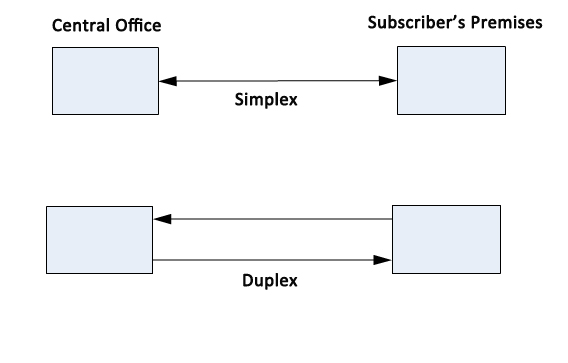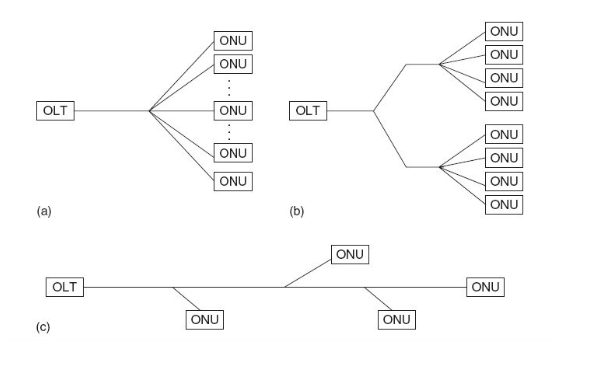As the leading technology being used in FTTx (FTTH) deployments, Ethernet Passive Optical Networks (GEPON or EPON) are now widely used in deployment. The related technologies keep developing and meanwhile the market of PON components keep growing. PON transceiver is an essential part of PON system which is necessary both for optical network unit (ONU) installed at the subscriber’s premises and for the optical line terminal (OLT) at the central office (CO). This paper is going to introduce the PON module with some basic knowledge.
What Is PON Module?
PON transceiver is a type of optical transceivers used for the PON system. It is general a bi-directional device that uses different wavelengths to transmit and receive signals between the OLT at the CO and the ONUs at the end users’ premises over a single fiber. According to the pluged-in device, PON transceiver can be divided into OLT transceiver module and ONU transceiver module with SFF (Small Form Factor), SFP (Small form-factor Pluggable)/SFP+ (Enhanced Small Form-factor Pluggable) or XFP (10 Gigabit Small Form Factor Pluggable) package. OLT transceiver is typically more complex than ONU transceiver, since each OLT transceiver must communicate with up to 64 ONU transceivers. For GPON Trnasceivers, there are 2 Class available—Class B+ and Class C+. The key differences between Class B+ and Class C+ are their TX power and RX Sensitive.
| Item | Class B+ | Class C+ | ||
| Tx | Rx | Tx | Rx | |
| OLT Tranceiver | 1.5-5 dB | -28 dB | 3-7 dB | -32 dB |
| ONU Transceiver | 0.5-5 dB | -27 dB | 0.5-5 dB | -30 dB |
PON Transceiver VS Conventional Transceiver
As was said above, PON transceiver is a kind of optical transceivers but it is actually different from the conventional transceivers we have mentioned before. You can read the following contents for detailed information about their differences.
- The optical signals transmission mode is Point to Point (P2P) when using Conventional transceiver.

- The modules should be used in pairs and using one fiber or two fiber to transmit (duplex or simplex).
- Fiber Link Loss includes attenuation, chromatic dispersion, fiber connection insertion loss etc.
- Has a longer transmission distance option, and up to 200 km.
- Applications: backbone network, less to use in access network due to the factor in cost.
- The optical signals transmission mode is Point to Multi-Point (P2MP) when using PON transceiver.

- The modules is not used in pairs. Generally, one OLT transceiver communicates with multiple ONU transceivers and the ONU transceivers may up to 128.
- Fiber Link Loss includes attenuation, chromatic dispersion, split ratio loss, fiber connection insertion loss etc.
- Shorter transmission distance than the Conventional module which is only up to 20 km.
- Applications: with more advantages in low cost for access network.
Challenges of PON Transceiver Design
The major technological challenges in PON transceivers are upstream burst-mode optical transmission technologies; optical transmitter output power as well as optical receiver sensitivity to satisfy the increasing system link budget requirements and higher data rates. To avoid interference in the upstream and increase bandwidth efficiency the Optical Network Unit (ONU) TX needs to have:
- Fast Rise/Fall Time—to minimise guard time
- High Extinction Ratio (ratio of optical power when a “1” and a “0” is transmitted)
- Stable output power during transmission
The Optical Line Terminal (OLT) RX needs to be able to receive packets with large differences in optical power and phase alignment:
- High sensitivity
- High Dynamic Range (ratio of maximum to minimum detectable power)—effect of differential reach
- Fast Response
Conclusion
In this paper, we gives a brief introduction to the PON module including its definition, differences between conventional transceiver and the challenges of design. As PON technology is receiving increasing emphasis, PON transceiver will be further developed and applied to PON system. For more information about PON, please focus more on our Passive Optical Network category.





